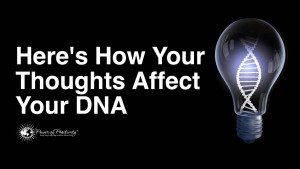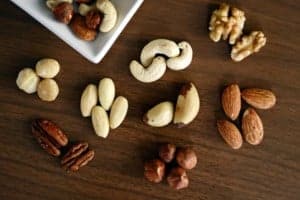If you’re not already familiar with DNA strands and how they contribute to your overall health, this article might interest you. Also known as deoxyribonucleic acid, DNA is a molecule that contains the instructions needed for organisms to develop, function, grow, and reproduce. In short, DNA is what makes individuals distinctly different from one another.
And DNA does indeed play a role when it comes to hair color, eye color, and many other aspects of our physical appearance. However, there is so much more to this molecule than most people realize.
WHAT YOU SHOULD KNOW ABOUT DEOXYRIBONUCLEIC ACID (DNA) STRANDS
Now we have established the fact that deoxyribonucleic acid plays a critical role in our development, function, growth, and reproduction. So let’s take an in-depth look at how these actions take place and how deoxyribonucleic acid strands fit into the equation.
Admittedly, understanding the structure of DNA can be complicated, especially for those without a background in science. In short, all humans have two deoxyribonucleic acid strands, which are attached via hydrogen bonds. This attachment is often referred to as a DNA double helix or double-stranded DNA.
These deoxyribonucleic acid strands work collectively to send signals to the body’s cells. And, they consist of 23 pairs of chromosomes, to determine the type of proteins that they will produce and how they will ultimately function in the body.
WHAT FACTORS DETERMINE HOW DEOXYRIBONUCLEIC ACID STRANDS FUNCTION?
When it comes to our health, many external factors can alter our DNA strands. And nutrition is one of them. In essence, the foods that we eat can have a profound impact on our deoxyribonucleic acid strands, the cells in our body, and overall health. To further put this into perspective, eating the wrong type of foods can alter deoxyribonucleic acid in that it can turn off genes that the body needs. Several studies have shown that eating the wrong foods can lead to serious vitamin deficiencies that increase the risk of developing chronic diseases, such as Alzheimer’s disease and diabetes, even if you’re not genetically predisposed to developing them.
WHAT FOODS SUPPORT GOOD DEOXYRIBONUCLEIC ACID FUNCTION?
There are a variety of foods that can help reverse, prevent, and even repair damage to your DNA strands. To help get you started in the right direction, here are a few that you can start incorporating into your diet today:
1 – Salads
If you’re a fan of salads, you have yet another reason to consume them more frequently. Salads that contain spinach and tomatoes can help combat oxidative stress that would otherwise damage cells, proteins, and even deoxyribonucleic acid, according to a study published by the European Journal of Nutrition, a peer-reviewed medical journal covering nutrition science.
2 – Blueberries
Easily one of the most versatile fruits that you can add to your diet, blueberries contain antioxidants that, like salads, can help combat oxidative stress. However, the health benefits do not end there. This fruit also helps to reduce visceral fat and even undo deoxyribonucleic acid damage.
If you’re still not sold on why you should add blueberries to your diet, look at this study published by ScienceDirect. They revealed that individuals who consumed a 10.5-ounce portion of blueberries saw a significant reduction in deoxyribonucleic acid damage an hour after consuming them.
3 – Watercress
Either incorporated into a salad or eaten on its own, watercress should be a part of a healthy, well-balanced diet. Watercress is a leafy, green vegetable that is chock-full of vitamins and minerals. In fact, a study published by the American Journal of Clinical Nutrition, a peer-reviewed biomedical journal in the field of clinical nutrition, revealed that study participants who consumed just ¾ cup of raw watercress each day saw a marked reduction in both basal and oxidative DNA-related damage. What’s more, the same study participants that ate this delicious leafy, green vegetable also reduced their chances of developing certain cancers.
4 – Soy milk
Soy milk can help reverse DNA-related damage in lymphocytes, the white blood cells in the lymphatic system, according to a study published by the European Journal of Nutrition. So if you’re lactose intolerant or merely enjoy the taste of soy milk, you have yet another reason to make soy milk a mainstay in your diet. Plus, soy milk is exceptionally versatile. You’ll be able to add it to coffee, oatmeal, smoothies, or drink it alone.
5 – Broccoli
Along with being an excellent source of calcium, which supports strong, healthy bones and teeth, broccoli also offers protection against DNA-related damage. In a study published by the National Institutes of Health, study participants who consumed 8.8 ounces of the edible green plant significantly reduced their chances of developing oxidative DNA-related damage by the end of the 10-day study. They were also less likely to develop diseases associated with oxidative stress and free radicals, including
- Atherosclerosis
- Certain cancers
- Respiratory diseases
- Diabetes
- Neurodegenerative diseases
- Eye diseases
- Inflammatory joint diseases
6 – Green tea
A study published in the Journal of Nutrition revealed that green tea is highly effective in reversing DNA-related damage, especially among smokers. This great-tasting tea also contains catechin, a type of flavonoid that can help with weight loss. And several studies show that maintaining a healthy weight can go a long way toward improving your overall health.
WHAT IS THE BEST DIET FOR HEALTHY DEOXYRIBONUCLEIC ACID FUNCTION?
For most people, consuming a healthy, well-balanced diet, which includes the foods mentioned in this article, is more than enough to promote healthy DNA-related function. However, this may not be the case for everyone. For many individuals, following a specific diet takes away the guesswork. Some of the most popular eating plans that nourish DNA strands include the following:
LOW-CARB DIET
For those with diabetes or who are overweight or obese, following a low-carb diet will help you lose weight. Furthermore, it’s useful for reversing or preventing DNA-related damage. That said, two of the most popular low-carb diets include the Atkin’s diet and the ketogenic diet.
And they have both been shown to stabilize blood glucose levels, boost energy, and protect against metabolic syndrome. That variety of health factors can increase the risk of developing high cholesterol, hypertension, and other challenges.
To get the most out of a low-carb diet, you should limit your consumption of sugar and carbohydrates. Plus, you should consume more of the following:
- healthy fats
- lean protein
- non-starchy vegetables.
LOW-FAT DIET
For those who have high cholesterol, following a low-fat diet can help lower your cholesterol while also reversing or preventing DNA-related damage. In short, follow a low-fat diet entails eliminating trans fats and saturated fats from your diet. And replace them with healthier monounsaturated and polyunsaturated fat instead. These healthier fats can increase HDL (good cholesterol). That action moves LDL (bad cholesterol) from other parts of the body into the liver. From there, the liver works to rid the body of LDL, which eventually lowers high cholesterol. Some great sources of monounsaturated and polyunsaturated fat include the following foods:
- fatty fish
- nuts
- avocados.
MEDITERRANEAN DIET
Similar to a low-fat diet, following the Mediterranean diet can also help lower high cholesterol and either prevent or reverse DNA-related damage. The Mediterranean diet involves consuming more fat and fewer carbs. The plan not only increases HDL and lowers high cholesterol but also helps stabilize blood glucose levels. And like low-fat and low-carb diets, following the Mediterranean diet can also prevent or reverse DNA-related damage. Some of the foods that you will want to eat while on this diet include the following:
- fruits and vegetables
- legumes
- whole grains
- avocados
Conversely, those that should be avoided include food rich in sugar or starch and trans fat. It is also a good idea to limit how much red meat you consume as well.
GLUTEN-FREE DIET
If you’re among the 18 million Americans struggling with gluten sensitivity, a gluten-free diet might be worth considering. Gluten sensitivity is a clinical term describing the body’s inability to break down and properly digest gluten protein. Thus, following a gluten-free diet means avoiding food rich in gluten, such as barley, rye, and wheat bran, for example.
In doing so, you can avoid many of the symptoms synonymous with gluten sensitivity. These signs include nausea, hives, and respiratory problems. A gluten-free diet can also reverse DNA-related damaged caused by consuming these foods as well.
 FINAL THOUGHTS ON NOURISHING YOUR DNA STRANDS
FINAL THOUGHTS ON NOURISHING YOUR DNA STRANDS
In summary, consuming a healthy, well-balanced diet, whether that entails making small dietary changes or following a specific diet, can go a long way toward nourishing your deoxyribonucleic acid strands. More than that, these same dietary changes can lead to better overall health.


















